Gujarat Travel Guide
1: Dwarkadhish Temple, Dwarka:
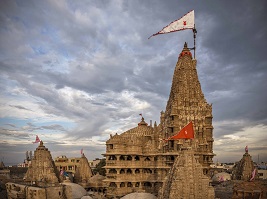
The Dwarkadhish temple is also known as the Jagat Mandir. It is a Hindu temple dedicated to god Krishna, who is worshiped here by the name Dwarkadhish, or ‘King of Dwarka’. The temple is located at Dwarka one of the destinations of Char Dham, a Hindu pilgrimage circuit. The temple has a five-story structure built on seventy-two pillars. The temple spire is 78.3 m high. The temple is constructed of limestone which is still in pristine condition. The temple shows intricate sculptural detailing done by successions of dynasties that ruled the region. The flag atop the temple shows the sun and moon, which is believed to indicate that Krishna would be there till Sun and Moon exist on Earth.
2: Somnath Jyotirlinga Temple, Dwarka:
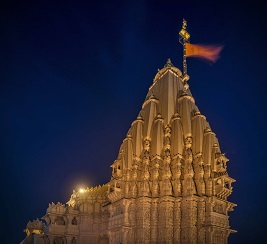
The Somnath Jyotirlinga Temple is first of the twelve Jyotirlinga shrines of Lord Shiva. It is located on the western coast of Gujarat and is one of the oldest temples of the country. The temple is located on the ancient Triveni Sangam or the confluence of three rivers – Kapila, Hiran, and Saraswati. It has been mentioned in ancient texts like Shreemad Bhagavat Gita, Skandpuran, Shivpuran and Rig-Veda which signifies the importance of this temple as one of the most celebrated pilgrimage sites. The temple is known as an eternal shrine owing to its perseverance against the test of time. It has withstood several destructions in the past and still has not lost its beauty. Sardar Vallabhbhai Patel was the force behind the revival and reconstruction of the present temple in 1951 which still serves as a notable edifice of the original Somnath Temple.
3. Gopi Talav:
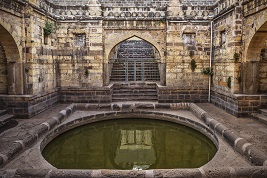
Gopi Talav is a mid size lake which is located 20 kms from Dwarka. The story behind the lake takes us back to Lord Krishna’s childhood when he was revered by the gopis of Vrindavan. When Krishna shifted his capital to Dwarka, the gopis couldn’t bear his estrangement. They came to meet him in Dwarka and performed raas on the day of sharad poornima. After the raas, they offered their lives to the soil of this land and merged with Lord Krishna. The soil here is fine and smooth bearing a yellow color and is believed to have divine properties that can cure many diseases, especially those related to skin. Today, many tourists purchase this soil, popularly known as Gopi Chandan, as a token of their visit. The whole area around Gopi Talav is made up of ghats for bathing with many shrines peppered around them. Many species of fishes and birds are found here thus contributing to a great atmosphere for photography.
4. Bet Dwarka:

Bet Dwarka is situated 30 km of the town of Dwarka. It is an inhabited island at mouth of the Gulf of Kutch situated 3 km off the coast of Okha, Gujarat. The island measured northwest to southeast in 13 km long with an average east-west width of 4 km. It is an extremely sacred pilgrimage destination which is believed to have been the original home of Lord Krishna during his years spent in Dwarka as a king. The bet is surrounded by several sand beaches. The southeast most end of bet is known as Dunny Point which is three side surrounded by sea. Bet Dwarka can be reached by ferry service from Okha. The main places to worship at Bet Dwarka are- Sri Keshavrai ji Temple and Hanuman Dandi.
5. Rukmani Temple:
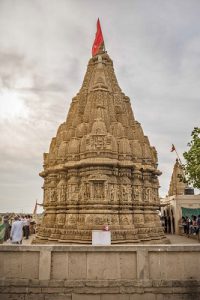
Rukmini Devi temple is located 2 kms away from Dwarka’s Jagat Mandir. It is dedicated to Goddess Rukmini (lord Krishna’s chief queen). The temple is said to be 2,500 years old but in its present form it is inferred to belong to the 12th century. The exterior of the Rukmini Temple is richly carved. It has a panel of sculpted naratharas (human figures) and a panel of sculpted gajatharas (elephants) at the base. The traditional spire of the main shrine contrasts strongly with the hemispherical dome of the pavilion. The garbhagriha (inner sanctum) has a recessed seat on which the present image of Rukmini, wife of Lord Krishna, was consecrated. The usual sculptures of god and goddesses, along with male and female figures, are seen on the exterior of the shrine.
6. Mahatma Gandhi’s birth place, Porbandar:
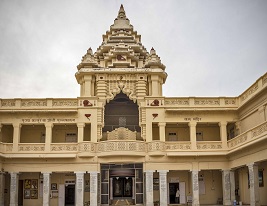
Porbandar is the birth place of Mahatma Gandhi. The site of Gandhi’s birth, now called Kirti Mandir. It has been converted into a small museum that displays items used by Gandhiji, along with some really old photographs. The museum houses a library that has books either written by Gandhiji or relating to his philosophies. Visitors can also enter the ancestral house of Gandhiji through the museum. As you enter the house, you will come across the big paintings of Gandhiji and his wife Kasturba, some of which include the rare black and white pictures of the two sharing lighter moments. It has been visited by a number of world leaders who still come here to pay their respects
7. Diu Beach, Diu:
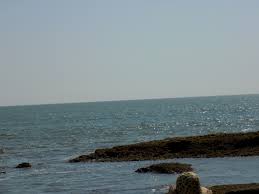
Diu is situated at the eastern end of Diu Island and is known for its fortress and old Portuguese cathedral. It is a fishing town. The beaches in Diu are ideal for a laid-back leisure vacation amidst peaceful ambience and ataraxy. With a coastal length of 21 kms, the beaches of Diu are absolutely quaint and beautiful. Boasting of rich flora, fauna and wildlife; the highlight of the island are the palm-fringed shorelines, clear indigo waters, lengthy coastlines and golden sandy beaches in Diu. The tiny island is blessed with gorgeous and relaxing ambience comprising mostly of the sun, sand and sea.
8. Gir National Park, Gir:
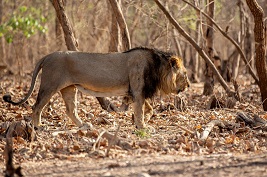
Gir Forest National Park is a wildlife sanctuary in Gujarat. It is located 43 km north-east of Somnath. It was established in 1965 to protect Asiatic lions, who frequent the fenced-off Devalia Safari Park, along with leopards and antelopes. Gir Jungle Trail, outside the fenced area, traverses deciduous forest and is home to wildlife including vultures and pythons. The Kamleshwar Dam has marsh crocodiles and birds, such as Indian skimmers and pelicans.
9. The Statue of Unity, Kevadiya:
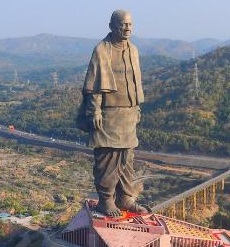
The Statue of Unity is a colossal statue of Indian statesman and independence activist Vallabhbhai Patel. It is located 3.5 km from a small town known as Kevadiya and approximately 25 kms from the nearest city Rajpipla, 90 kms from Vadodara, 150 kms from Surat and 200 kms from Ahmedabad. It is the world’s tallest statue with a height of 182 metres (597 feet). The construction of the statue started in October 2013 by Larsen & Toubro. It was designed by Indian sculptor Ram V. Sutar and was inaugurated by Indian Prime Minister Narendra Modi on 31 October 2018. The statue can be seen within a 7 km radius.
10. Sabarmati Ashram, Ahmedabad:
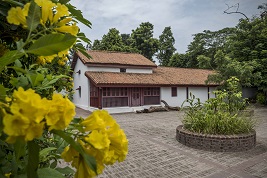
Sabarmati Ashram is located in the Sabarmati suburb of Ahmedabad, Gujarat, adjoining the Ashram Road, on the banks of the River Sabarmati. It is also known as Gandhi Ashram, Harijan Ashram, or Satyagraha Ashram. Gandhiji lived in Sabarmati for a total of twelve years with his wife Kasturba Gandhi and followers, including Vinoba Bhave. Gandhiji’s India ashram was originally established at the Kocharab Bungalow of Jivanlal Desai, a barrister and friend of Gandhi, on 25 May 1915. The ashram now has a museum, the Gandhi Smarak Sangrahalaya. The main attaraction of museum is My life is my message” gallery, consisting of 8 life-size paintings and more than 250 photo-enlargements of some of the most vivid and historic events of Gandhi’s life, Exhibition showing quotations, letters and other relics of Gandhiji.
11. Little Rann of Kutch
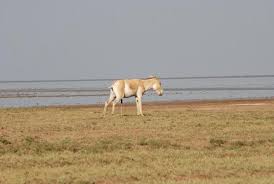
The Little Rann of Kutch is a salt marsh which is part of the Rann of Kutch in Kutch district, Gujarat. It is called little because of its size comparison with the neighbouring salt desert of the Greater Rann of Kutch which is spread over 7,500 sqkm. The Rann of Kutch is famous for its white salty desert sand and is reputed to be the largest salt desert in the world. To conserve this species, the Indian Wild Ass Sanctuary (IWAS) was created in 1973. Little Rann of Kutch in Gujarat is the home of Asiatic Wild Ass or khur, one of the most endangered species in the world. The sanctuary is also home to many species of migratory birds, such as the sarus crane, ducks, the Dalmatian pelican, and flamingoes, as well as land birds like the sandgrouse, the francolin and the Indian bustard. It is also home to various mammals such as the Indian wolf, desert fox and nilgai.

